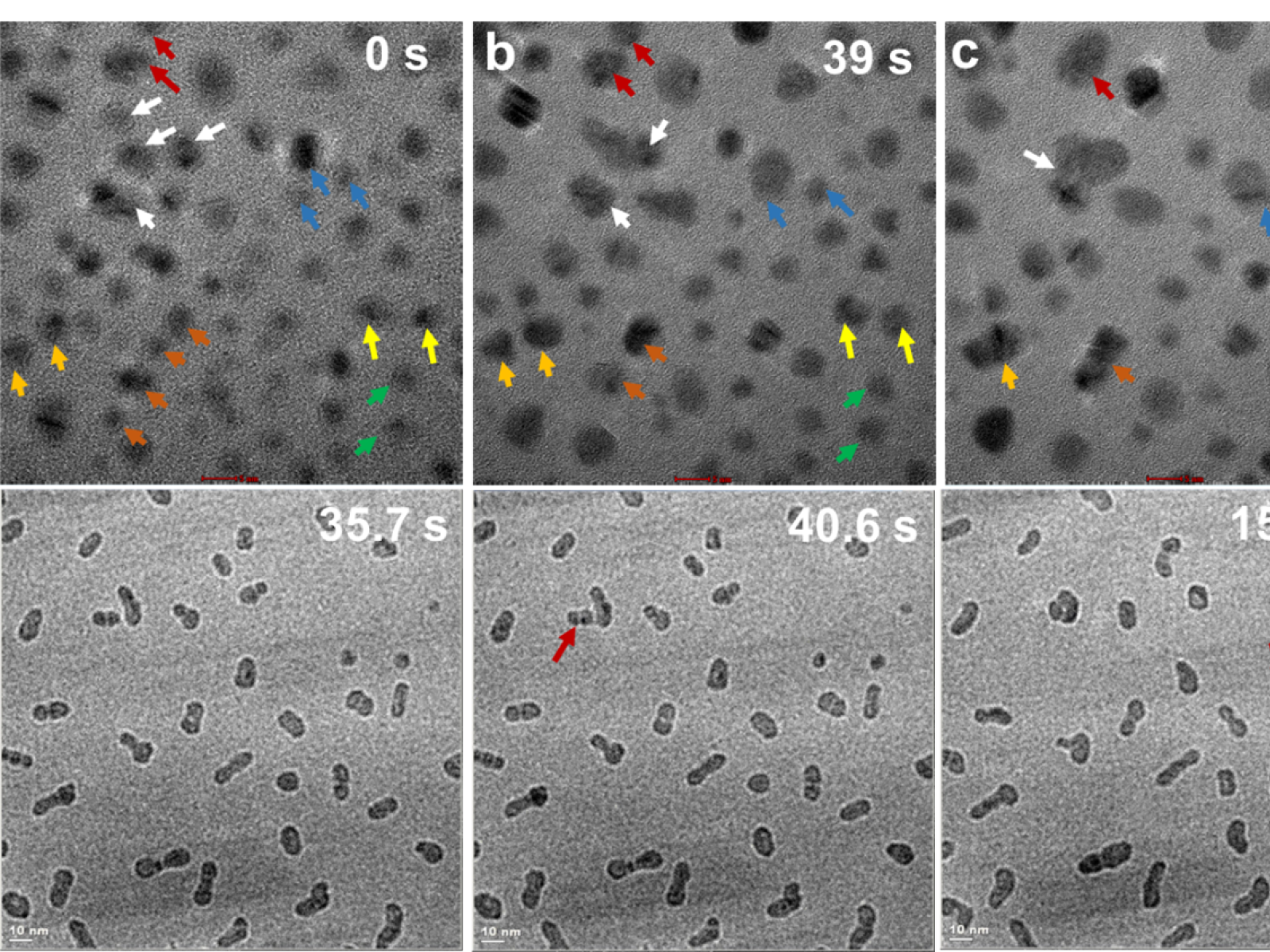Understanding the Forces that Regulate Crystallization by Particle Attachment
Fully identifying what controls nanocrystal assembly requires incorporating non-traditional forces into models

Zinc oxide nanocrystals undergo oriented attachment and act as a model system for understanding forces outside traditional frameworks.
(Image by Lili Liu | Pacific Northwest National Laboratory)
The Science
A complex interplay of energetics and dynamics governs the behavior of nanocrystals in solution. These dynamics are usually interpreted in terms of the theory developed by Derjaguin, Landau, Verwey, and Overbeek (DVLO), and understanding these forces is particularly important for controlling oriented attachment (OA), where individual nanocrystals fuse together in specific alignments. Researchers explored the effects of forces not accounted for in DLVO theory on a zinc oxide (ZnO) model system undergoing OA. They found that the driving forces behind the attachment are dipole-dipole forces that are not considered in DLVO theory. The dipole forces lead to faster attachment in less polar solutions, validated by calculations that account for non-DLVO forces. The researchers also showed that the short range, repulsive forces that slow attachment depend on the nature of the solvent, particularly its molecular packing and intermolecular interactions.
The Impact
Researchers have created an impressive array of nanomaterials with unique properties such as colloidal crystals, mesocrystals, highly branched nanowires, and adaptive materials that respond reversibly to external stimuli. Continuing to advance the field and develop a predictive understanding of particle aggregation and attachment behavior requires moving beyond traditional colloidal theories, such as DLVO. Identifying the different forces at play in OA will enable researchers to create conditions that produce the specific final nanomaterial structures needed for applications.
Summary
Nanoparticles in solution can grow, aggregate, assemble, attach, or remain dispersed due to the interplay of energetics and dynamics. Before fusing to create larger single crystals, they often become crystallographically coaligned before the point of contact in the OA process. Traditional colloidal theories, such as DLVO theory, provide a framework for evaluating the forces that underly nanoparticle behavior but fail to capture key particle interactions due to the crystal structure and interfacial solution structure. Researchers explored the non-DLVO forces that regulate the dynamics and outcomes of particle aggregation, coalignment, and attachment in a ZnO model system. They investigated the effect of dipole-dipole interactions on the long-range forces and torques that drive particle approach and alignment by combining in situ transmission electron microscopy observations of OA events with Langevin dynamics simulations using a range of solvents. Comparing the magnitude of these forces to the electrostatic and van der Waals forces calculated using DLVO theory showed that the non-DLVO forces dominate and provide a rationale for the discrepancies observed in the different solvents. They also investigated the short-range repulsive forces arising from the solvent structure near the ZnO surface using 3D atomic force microscopy. The solvation force is stronger in water compared to ethanol and methanol due to the stronger hydrogen bonding and denser packing of water molecules at the interface. These results highlight the importance of resolving and quantifying non-DLVO forces in establishing a general framework for understanding and predicting materials synthesis via particle aggregation and attachment.
Contact
Jim De Yoreo, Pacific Northwest National Laboratory, James.DeYoreo@pnnl.gov
Funding
This work was supported by the Department of Energy, Basic Energy Sciences, Division of Materials Science and Engineering, Synthesis, and Processing Science Program at Pacific Northwest National Laboratory, FWP 67554.
Published: July 23, 2024
L. Liu, S. Y. Schmid, A. Feng, D. Li, T. C. Droubay, P. J. Pauzauskie, G. K. Schenter, J. J. De Yoreo, J. Chun, E. Nakouzi. “Effect of solvent composition on non-DLVO forces and oriented attachment of ZnO nanoparticles,” ACS Nano, 18 (16743). [DOI: 10.1021/acsnano.4c01797]